The world of software development relies heavily on the crucial elements of software testing and quality assurance (QA) to ensure the creation of dependable, efficient, and tailor-made software products. Software testing is primarily tasked with the intricate validation of software's functionality across a multitude of scenarios, guaranteeing that it performs in accordance with expectations.
In contrast, quality assurance takes on the responsibility of safeguarding the entire development process, meticulously examining it for alignment with predefined standards, and proactively striving to prevent defects from arising.
This article embarks on an exploration of the pivotal roles played by testing and quality assurance in the realm of bespoke software development.
Software Testing vs. Quality Assurance
Software testing emerges as a systematic undertaking, encompassing the execution of software systems or components to uncover errors or deviations from expected outcomes. It entails rigorous verification and validation to confirm that the software operates as intended, maintains reliability under specified conditions, and fulfils user requirements.
The role of software testing & QA proves indispensable within the software development lifecycle (SDLC). Its efficacy lies in guaranteeing the delivery of a dependable, secure, and high-performing product through early detection and rectification of bugs and errors during the development phase. This proactive stance significantly mitigates the risk of failure, augments the software's user-friendliness, and elevates customer contentment.
Quality assurance, in contrast, emerges as a forward-looking process fixated on refining the software development methodology, rendering it efficient and effective, in harmony with the predefined quality standards set for software products.
QA encompasses the complete cycle of making a software better and enhanced, while monitoring and enhancing the processes, ensuring strict adherence to established procedures, standards, and protocols, and promptly addressing any challenges that surface at the nascent stages.
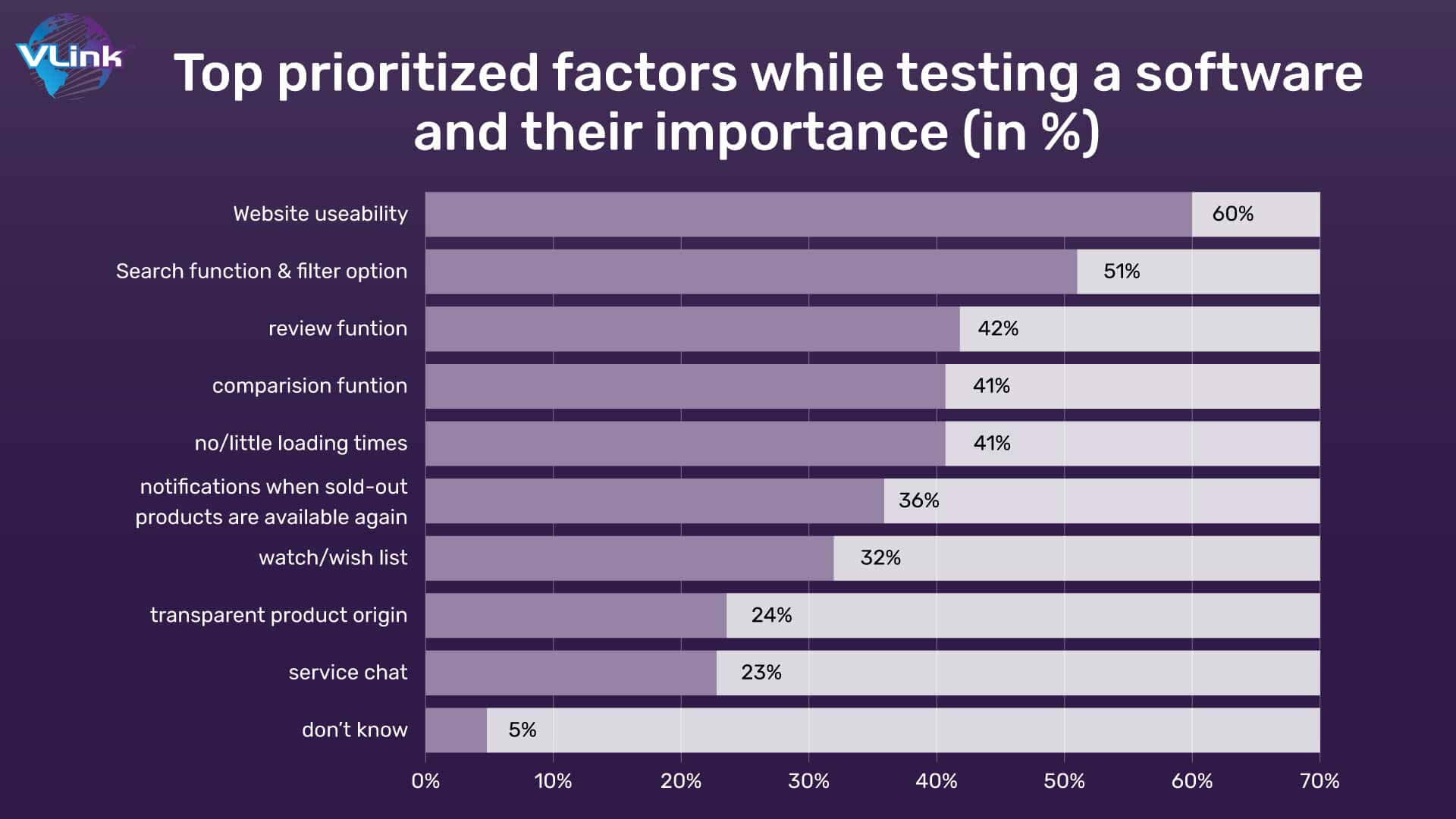 Moreover, QA extends its purview beyond the final product, overseeing every facet of software evolution, from the initial phase of requirement gathering to the design, execution, and maintenance.
Moreover, QA extends its purview beyond the final product, overseeing every facet of software evolution, from the initial phase of requirement gathering to the design, execution, and maintenance.
This comprehensive approach serves to overcome issues throughout the SDLC, thus determining the time and financial resources expended on post-deployment issue removal.
Custom Software Testing’s Role in the SDLC
The software development lifecycle (SDLC) encompasses of three different software testing phases: early-stage, late-stage, and automated testing.
Early-Stage Testing
At the outset, we encounter unit testing that includes the analysis of every individual software component conducted in isolation. The primary aim here is to ascertain their flawless functionality.
The significance of this phase lies in its capacity to address bugs at pre-development stage, thus saving invaluable time and resources that might otherwise be expended on debugging and resolving issues later in the development journey.
Following closely towards the last of unit testing is integration testing. This phase entails the analysis of discrete software modules, subjecting them to collective changes. Integration testing serves as a collection wherein developers identify and rectify any potential issues arising from the integration of features and other functionalities.
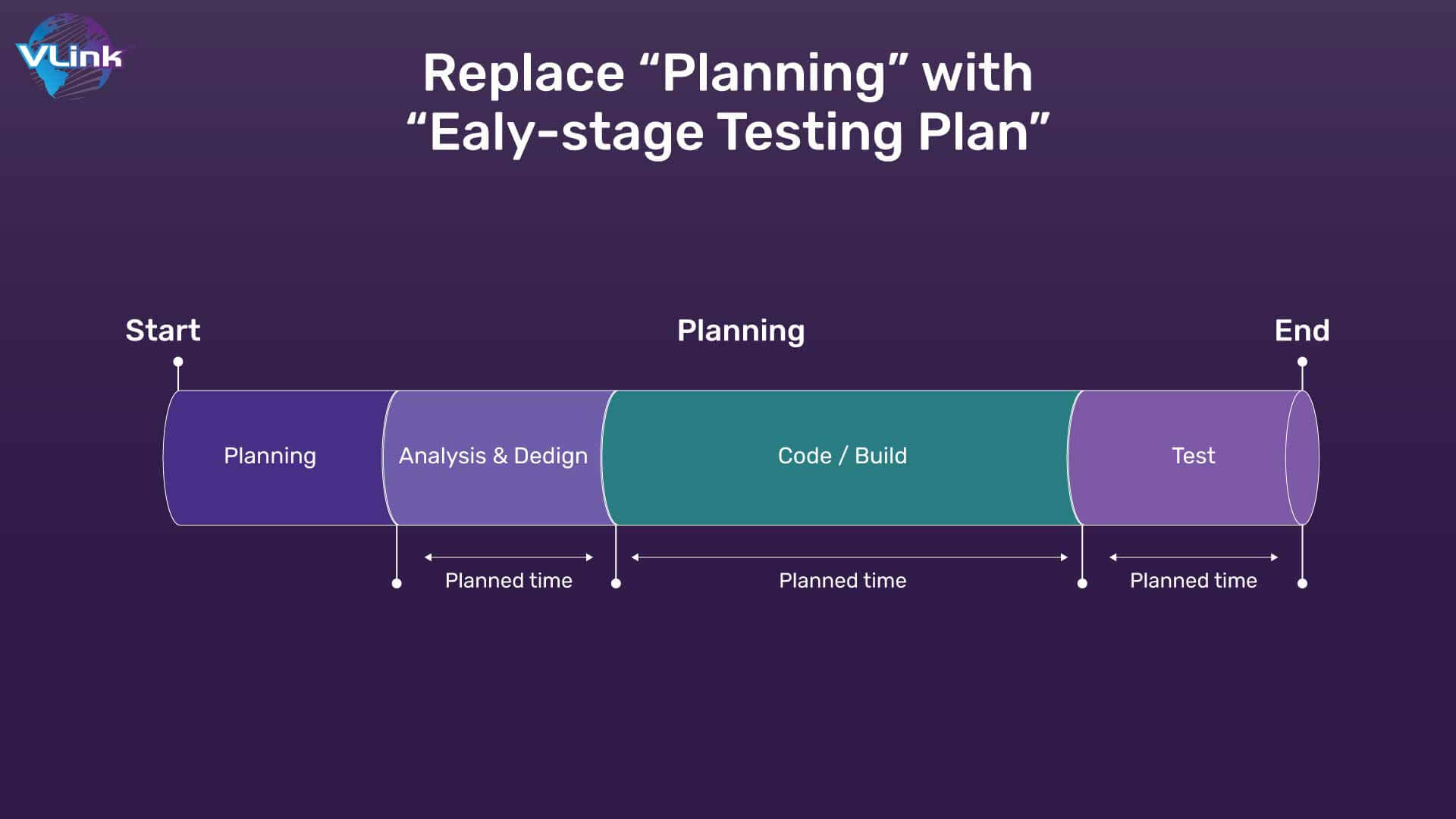 These early-stage testing methods attains utmost importance in the realm of custom software development. They help in establishing the reliability and robustness of the eventual product. By ensuring the seamless operation of individual components and their quality interaction, these tests furnish a stable foundation for the subsequent phases of software evolution.
These early-stage testing methods attains utmost importance in the realm of custom software development. They help in establishing the reliability and robustness of the eventual product. By ensuring the seamless operation of individual components and their quality interaction, these tests furnish a stable foundation for the subsequent phases of software evolution.
Late-Stage Testing
Venturing further into the SDLC, we follow system testing, a complete evaluation of the software that transpires after integration testing. It encompasses a comprehensive assessment of the entire software solution, validating its adherence to predefined specifications.
Last-stage testing focuses on both the functional and non-functional aspects of the software, guaranteeing the cohesion and collaborative functioning throughout the structure. User Acceptance Testing (UAT), often referred to as acceptance testing, marks the final stage before the software product is given to the customer.
UAT serves as the litmus test, ensuring that the system aligns with the defined criteria and stands prepared for real-time access. Both system testing and acceptance testing bear immense significance in the realm of custom software development. They certify that the ultimate product operates flawlessly as a unified entity, fulfilling user expectations and adhering to their requirements.
Automated Testing
The utilization of automated testing harnesses specialized software tools to orchestrate tests, compare actual outcomes with expected results, and autonomously generate test reports.
This approach particularly excels in tasks characterized by repetition and regression testing, where the objective centers on verifying that previously developed and tested software retains its functionality following alterations.
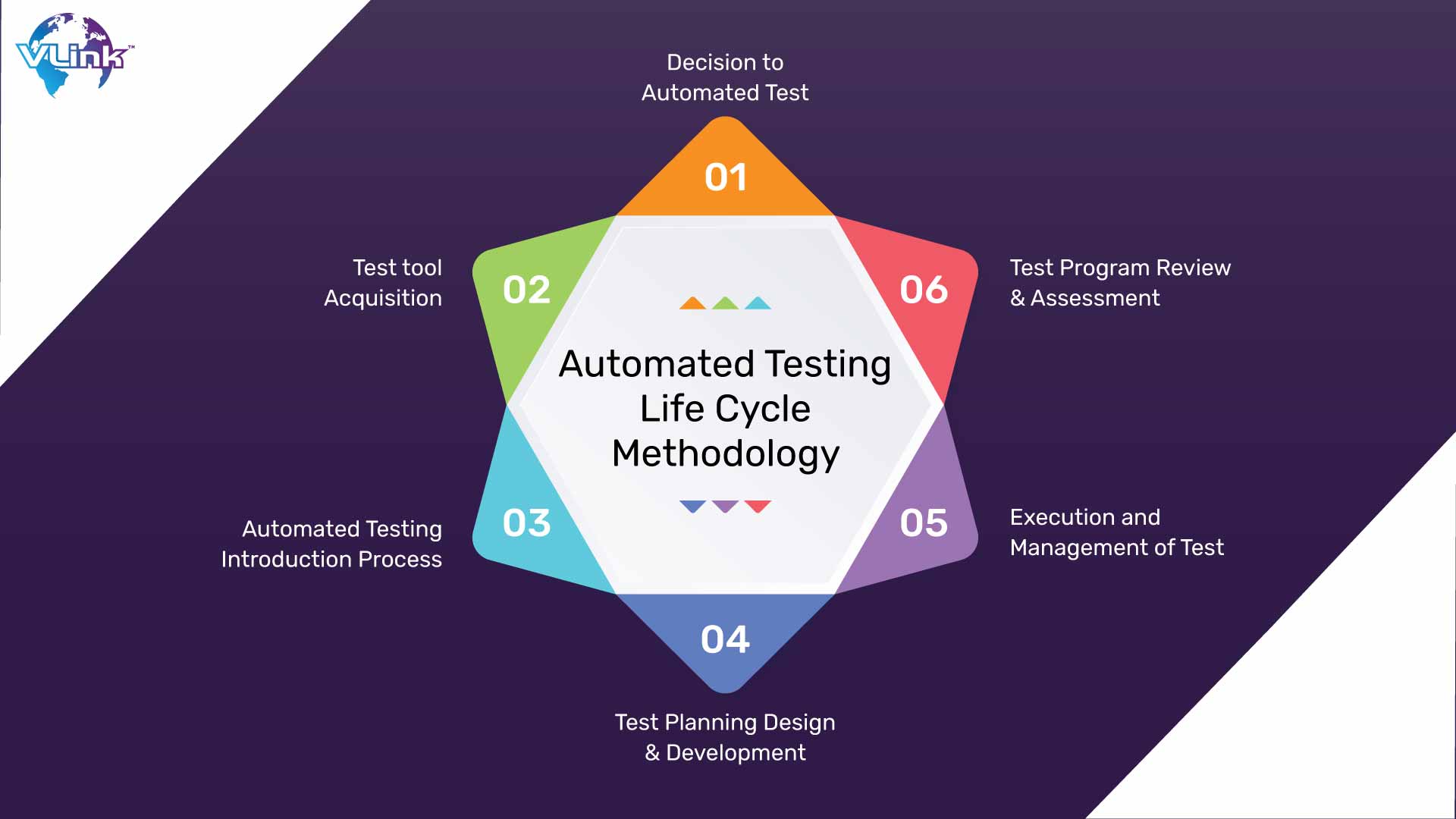
Automated testing brings forth heightened efficiency, reliability, and expediency to the testing continuum, facilitating comprehensive test coverage while concurrently liberating developers from mundane tasks.
QA’s Role in the SDLC
Quality assurance's role within the software development lifecycle (SDLC) is not a siloed endeavor but a series of integrated activities that span the entire spectrum of SDLC phases. These activities encompass:
Requirement Analysis: QA teams become involved from the project's inception, collaborating in the definition of requirements. Their role is to ensure that these requirements are understandable, concise, and adhere to testing.
Design Review: Quality assurance extends its influence to streamline designing, confirming their alignment with established requirements and design standards.
Test Planning: QA teams draft comprehensive testing plans, combining the testing approach, resource requisites, project timelines, and the scope of testing.
Code Review: QA professionals undertake code reviews to assess adherence to coding standards and best practices, promoting code quality.
Testing: QA teams execute meticulously crafted test cases and diligently report any identified bugs for correction. They also oversee the resolution of reported issues through re-testing.
Release Management: Quality assurance assumes responsibility for managing the software release process, ensuring that the product is primed for deployment and operational use.
Post-release Support: Post-release, QA teams maintain vigilance, monitoring the software for any issues reported by end-users and ensuring timely resolutions.
Identifying and mitigating risks
Quality assurance plays a pivotal role in risk mitigation throughout the software project. QA teams possess the acumen to identify potential risk areas across various phases, whether in requirement gathering, coding, or testing. These risks might manifest as ambiguous requirements, lurking security vulnerabilities, or functionality misalignments with user expectations.  By pre-emptively recognizing these risks in the project's nascent stages, QA teams can institute proactive measures to curtail their escalation into more formidable issues. Such measures may encompass refining requirements, implementing secure coding practices, or fortifying test coverage to ensure a robust product.
By pre-emptively recognizing these risks in the project's nascent stages, QA teams can institute proactive measures to curtail their escalation into more formidable issues. Such measures may encompass refining requirements, implementing secure coding practices, or fortifying test coverage to ensure a robust product.
How do testing and QA complement each other?
Though software testing and quality assurance maintain distinct identities, they are inextricably intertwined, harmoniously contributing to the realm of custom software development. Both share the common objective of fostering a potential, dependable, and efficient software product.
Software testing serves as a pivotal instrument within QA's arsenal, deployed to validate the software's accuracy and reliability. By conducting exhaustive tests at multiple junctures in the SDLC, QA teams unearth potential defects and glitches at an early stage, affording the opportunity for rectification and thus elevating the overall product quality. 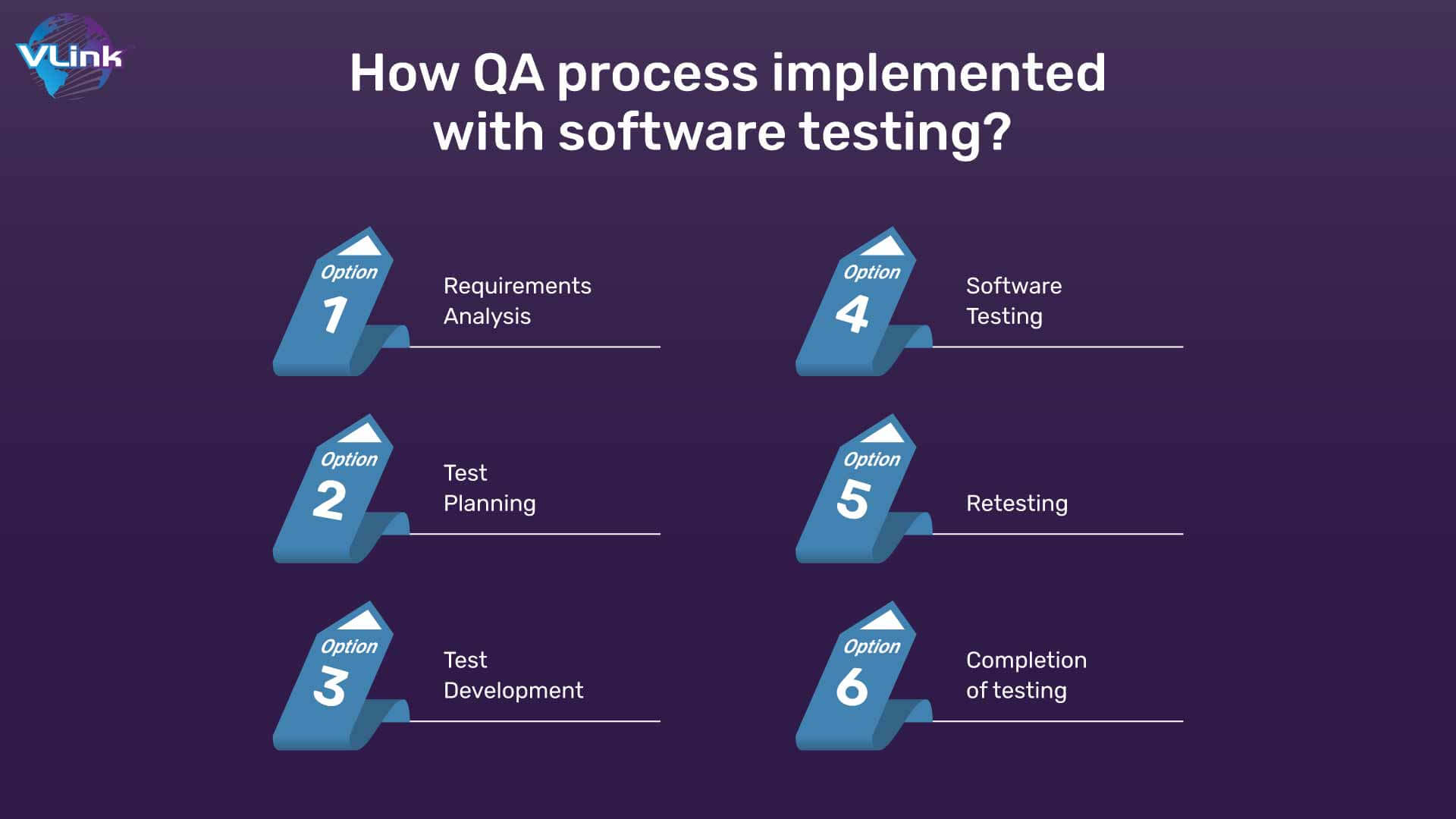 Conversely, quality assurance establishes the foundation, delineating standards and procedures that must be adhered to during the software development journey, including the testing phase. It represents a proactive pursuit, endeavoring to optimize the development process and forestall defects before their emergence.
Conversely, quality assurance establishes the foundation, delineating standards and procedures that must be adhered to during the software development journey, including the testing phase. It represents a proactive pursuit, endeavoring to optimize the development process and forestall defects before their emergence.
Hence, software testing and quality assurance synergize to form a holistic quality management strategy. Testing ensures that the software aligns with user requisites and functions as envisioned, while quality assurance certifies the development process's efficiency, effectiveness, and compliance with established quality benchmarks.
Balancing testing and QA
Achieving the delicate balance between testing and quality assurance (QA) is paramount, as an excessive focus on either facet can introduce inefficiencies and gaps within the quality management strategy. An inconsistent emphasis on testing, devoid of robust QA, may lead to a reactive approach wherein defects are only unearthed and rectified as they manifest, rather than being proactively prevented.
Such an approach could lead to costly and time-consuming error-solving during the later stages of the development cycle. Conversely, an exclusive concentration on quality assurance, sans comprehensive testing, may result in software plagued by functional errors or failing to meet user expectations, even if crafted through a well-defined QA process.
A required balance ensures that software is conceived through a resilient, quality-driven process, and the ultimate product aligns with its intended functionality, satisfying user needs. This synergy begets a potential product and a software development process that is more cost-effective.
The tangible outcomes of software testing and quality assurance extend beyond ensuring the product quality. These processes focus in a software product built on solid foundations, where every required component functions as envisioned, and the entire software product operates successfully.
They also facilitate the early identification and rectification of issues, augmenting the software's reliability and robustness.
1- Cost-Effectiveness & Time Efficiency
Rigorous testing and quality assurance can significantly reduce development time and costs by enhancing efficiency. Detecting and correcting defects at an early stage mitigates the need for resource-intensive fixes later in the development process.  This approach also curtails the risk of project overruns due to unexpected complications. Additionally, quality assurance can enhance productivity and efficiency by optimizing the software development process, ultimately resulting in more punctual software delivery.
This approach also curtails the risk of project overruns due to unexpected complications. Additionally, quality assurance can enhance productivity and efficiency by optimizing the software development process, ultimately resulting in more punctual software delivery.
2- Enhanced Customer Satisfaction
A software product that functions reliably and aligns with user expectations contributes to elevated customer satisfaction. Effective testing and quality assurance diminish the likelihood of software malfunctions or failures, ensuring that the software performs optimally and delivers a positive user experience.
3- Increased Market Competitiveness
In the fiercely competitive software market, product quality plays a pivotal role as a differentiator. A well-tested, high-quality software product stands out, attracting a larger user base and establishing a stronger reputation.
Moreover, a streamlined and efficient development process, facilitated by quality assurance, can accelerate time-to-market, conferring a competitive edge in the rapidly evolving software industry.
The landscape of software testing and quality assurance is poised for transformation with the advent of new technologies. Here are several technological advancements predicted to reshape custom software testing:
1- AI & Machine learning
The integration of AI and machine learning is gaining momentum in testing and quality assurance. AI can streamline the test case writing process, identify high-risk areas for testing, predict and diagnose issues, and even autonomously rectify bugs. 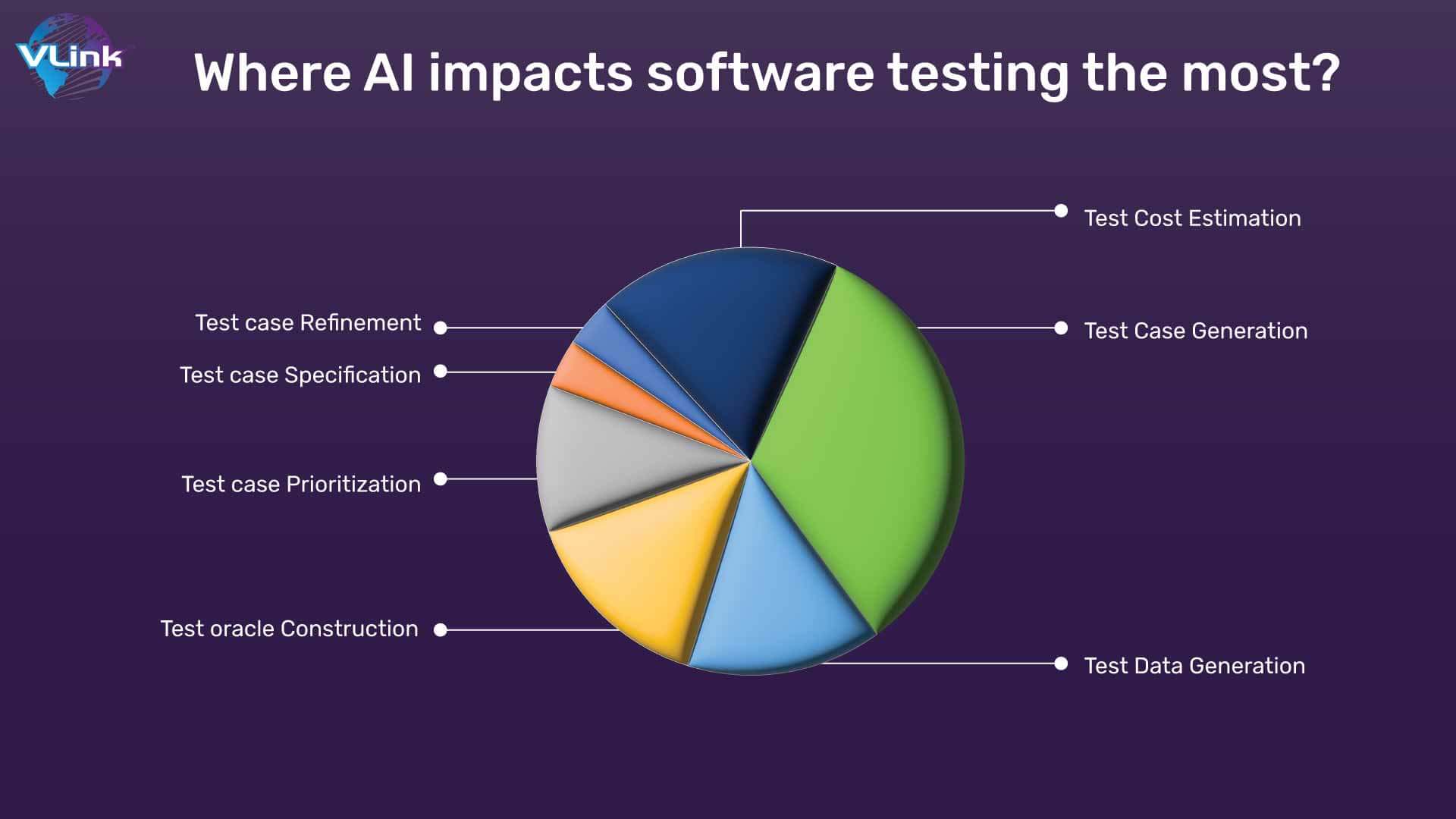 Machine learning algorithms leverage historical test data to enhance future testing, optimizing testing schedules, predicting test failures, and offering insights into the overall health of the testing process.
Machine learning algorithms leverage historical test data to enhance future testing, optimizing testing schedules, predicting test failures, and offering insights into the overall health of the testing process.
2- DevOps & Agile Approach
The emergence of DevOps automation and the Agile methodology has revolutionized software development, ushering in a paradigm shift in testing and quality assurance. These approaches underscore the importance of continuous testing and quality assurance throughout the software development lifecycle.
This continuous approach enables early defect detection and accelerates the delivery of high-quality software. Automated testing tools and practices play an indispensable role in this context, enhancing testing efficiency and quality.
3- The Rise Of Quality Engineering
A notable trend is the shift from traditional quality assurance to quality product engineering. In contrast to QA, which primarily focuses on defect identification and resolution, quality engineering adopts a proactive stance, incorporating quality considerations at every stage of the software development lifecycle. 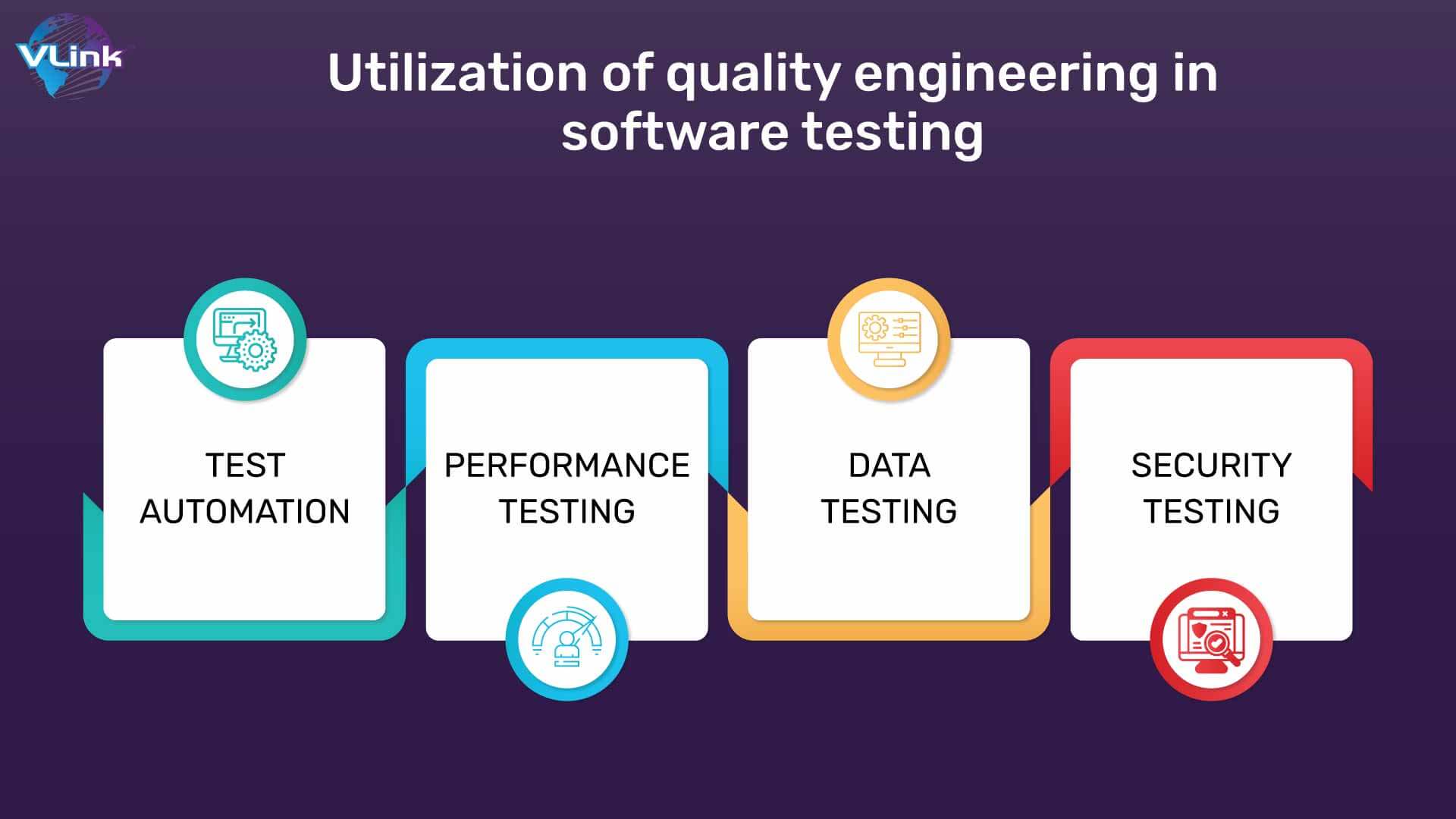 This shift implies that quality is not the sole purview of testers or QA professionals but becomes a collective responsibility, involving stakeholders from designers and developers to project managers.
This shift implies that quality is not the sole purview of testers or QA professionals but becomes a collective responsibility, involving stakeholders from designers and developers to project managers.
Testing and quality assurance are not mere phases in the software development journey but are integral to the creation of a potential, dependable, and efficient software product.
The seamless integration of testing and quality assurance throughout the software development lifecycle guarantees that the product aligns with its intended functionality and satisfies user needs and expectations, enhancing the software's value and utility.
While technology continues to prompt changes in these practices, the human element remains invaluable. The skill, expertise, and judgment of testers and quality assurance professionals continue to play a pivotal role.
VLink ensures to navigate this evolving landscape, an unwavering commitment to learning and adaptation stands as a cornerstone in ensuring the delivery of top-notch custom software products. Our software testing & QA services will make your product more refined and structured to be deployed as a qualified business solution.






